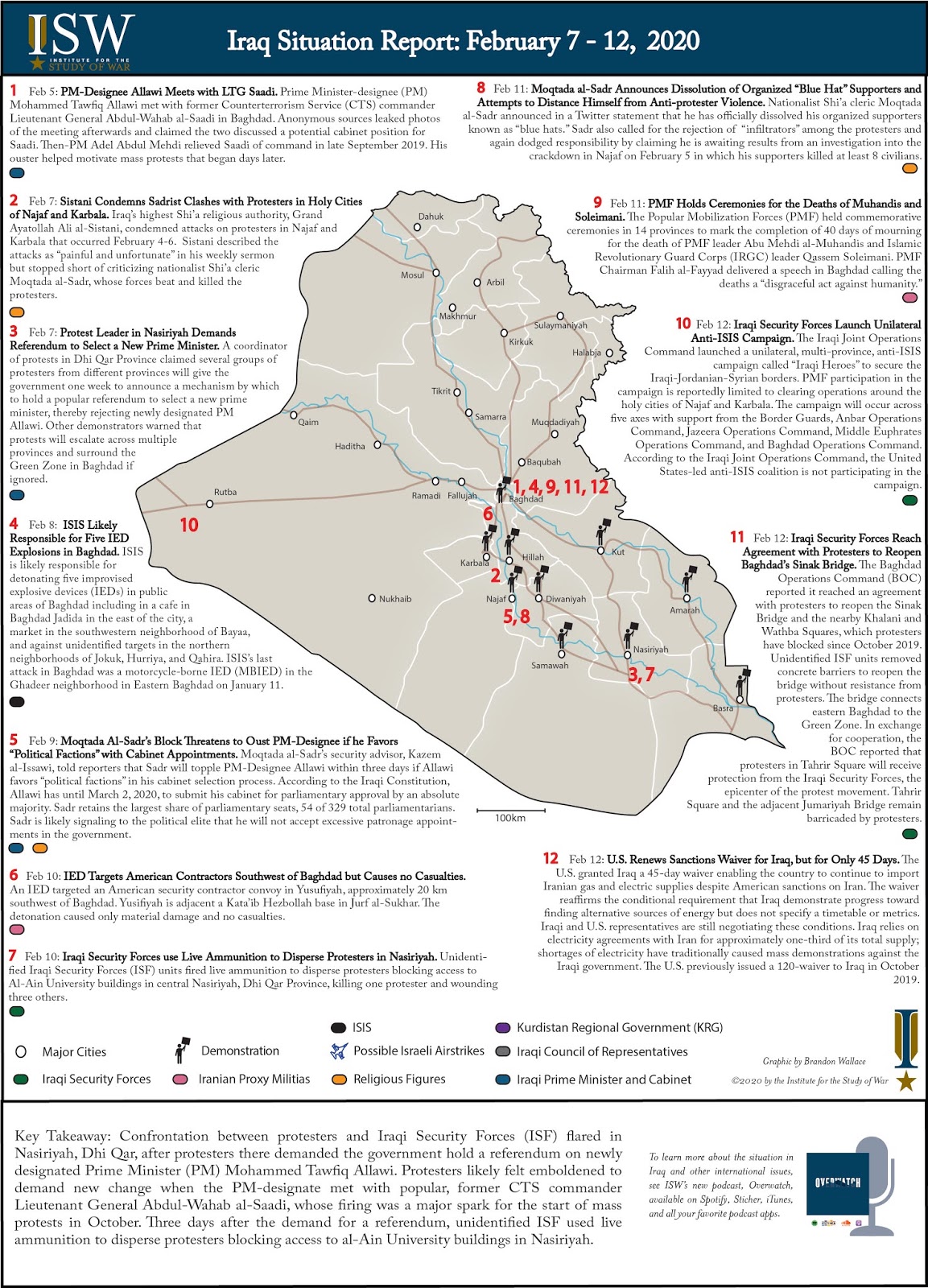By: Brandon Wallace
ISW is assessing the ongoing unrest and its effects on political-security dynamics in Iraq. The Iraq Situation Report (SITREP) map series summarizes key events and likely developments to come. The following SITREP map covers the period February 7 – 12, 2020.
Key Takeaway: Confrontation between protesters and Iraqi Security Forces (ISF) flared in Nasiriyah, Dhi Qar, after protesters there demanded the government hold a referendum on newly designated Prime Minister (PM) Mohammed Tawfiq Allawi. Protesters likely felt emboldened to demand new change when the PM-designate met with popular, former CTS commander Lieutenant General Abdul-Wahab al-Saadi, whose firing was a major spark for the start of mass protests in October. Three days after the demand for a referendum, unidentified ISF used live ammunition to disperse protesters blocking access to al-Ain University buildings in Nasiriyah.
Key Takeaway: Confrontation between protesters and Iraqi Security Forces (ISF) flared in Nasiriyah, Dhi Qar, after protesters there demanded the government hold a referendum on newly designated Prime Minister (PM) Mohammed Tawfiq Allawi. Protesters likely felt emboldened to demand new change when the PM-designate met with popular, former CTS commander Lieutenant General Abdul-Wahab al-Saadi, whose firing was a major spark for the start of mass protests in October. Three days after the demand for a referendum, unidentified ISF used live ammunition to disperse protesters blocking access to al-Ain University buildings in Nasiriyah.

